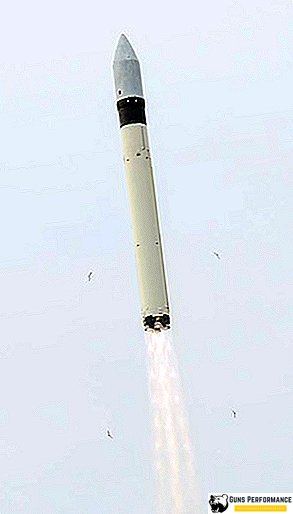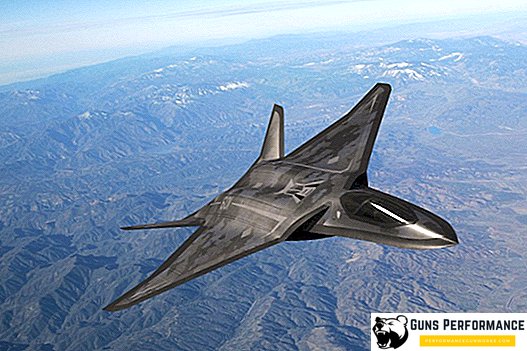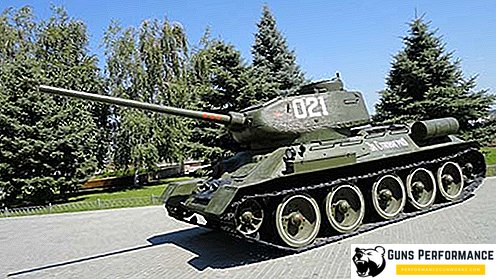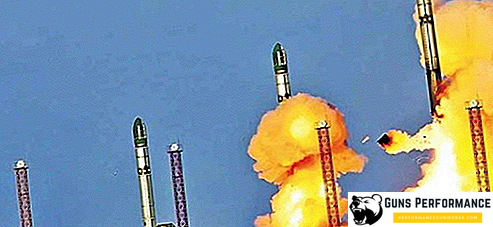One of the most important components of the strategy of hostilities at sea is to protect its own coast. A reliable means to ensure it is coastal anti-ship complexes capable of effectively “working” against enemy landing ships, its aircraft carrier groups, convoys and single ships. The Russian army is currently armed with the K 300 "Bastion" anti-ship missile system, equipped with the Onyx missile (in the export version - Yakhont). The bastion belongs to the latest fourth-generation SCRC.

History of creation
The history of the anti-ship missile system (SCRC) "Bastion" began at the turn of the 80s of the last century. It was then that a decision was made to create a new SCRC to replace the Rubezh and Redut complexes, created in the late 60s of the last century and no longer satisfying the military.
The creation of a new operational-tactical SCRC began at the Mashinostroyenia NPO under the leadership of the General Designer Efremov. Initially, this complex was thought to be created as universal as possible, that is, to provide for the possibility of placing it on surface ships, submarines, and ground launchers. Thus, the missile system was supposed to surpass even the American “Harpoon” rocket - a kind of standard in this class.
The test of the missile at the test site began in 1985, there were several launches. In 1987, the first launch from the surface of the ship. The first test launch of a rocket from a submarine took place in 1992. The tests of this RCC were successfully completed in 2002. It should be noted that such a long commissioning of the Onyx anti -frame control system is not the fault of the developers, but is primarily associated with the difficult situation that occurred in the country after 1991.
The coastal anti-ship missile system was adopted by the Russian army in 2010, the Orenburg NPO Strela is launching missiles for the complex. Several complexes have already been transferred to the Russian military, next deliveries are expected in 2018.

"Onyx": description of the rocket
The development of the coastal anti-ship missile system "Bastion" is inextricably linked with the work on the Onyx anti-ship missile (RCC), with which it is equipped. This rocket is designed to combat single and group surface targets in conditions of strong electronic and fire resistance. Rocket range is 300 kilometers. The rocket was created according to the classical scheme, with an X-shaped arrangement of aerodynamic surfaces. The homing head and the main equipment of the control system, as well as the warhead are located directly in the central body of the air intake.
The length of the RCC "Onyx" is 8.2 meters, and the mass is 3 tons. An air-jet ramjet engine with a solid primary fuel accelerator is installed on Onyx, which allows it to reach speeds of up to 750 m / s. The fuel for the engine is kerosene.
Immediately after the release of the CRP from the launch shaft, the accelerator begins to work, it gives the rocket a speed of 2M, after its burnout, the main engine starts up, accelerating Onyx to a speed of 2.5M. The launch of the missile into the target area with an inertial navigation system, then the homing head is turned on, and the missile first captures the target. Following this, it is reduced to an extremely small height (10-15 meters), so at the final stage of the flight it is below the range of the air defense. At the final stage of the flight, the radar is again switched on, which accompanies the chosen target.

Shooting with Onyx missiles is possible both with one anti-ship missile and with a volley against several enemy ships. In this case, the missiles fly "flock" and interact with each other to more effectively perform the task. Missiles determine the level of importance of each target, choose the tactics of attacking actions and develop an attack plan. In addition, the missile system of each missile has the ability to counteract electronic interference and air defense system.
The distinctive advantages of the rocket are a large (over-the-horizon) firing range, the intelligence of this weapon (the principle of "fired and forgotten"), a very high speed of flight on all its sections (which makes missile interception very problematic), a large set of possible flight paths and their combination. As well as the ability to install anti-ship missiles "Onyx" on a variety of bases (surface ships, submarines, coastal complexes). The rocket can fly like a low trajectory (several tens of meters), while the speed and range of its flight will be less. Or, immediately after leaving the container, gain greater height, and then drastically lower it just before entering the area where the target is located.
Onyx leaves the factory walls in a special transport and launch container, in full readiness for launch. Control the status of the rocket can be directly in the container. Rocket launch is possible both from an inclined launch shaft, and from a vertical one.

Specifications rocket "Onyx"
| Maximum range, km | up to 300 |
| Flight altitude, m | 5-15000 |
| Flight speed, m / s | up to 750 |
| Trajectory | combined and low altitude |
| Control system | inertial with RGSN |
| Missile launch mass, kg | 2500 (aviation), 3000 (ship) |
| Weight, kg | 3900 - in TPK |
| Warhead: type / weight, kg | penetrating / up to 300 |
| Service life, years | to 10 |
Anti-ship missile system "Bastion"
The Bastion complex is armed with Onyx missiles, which have no analogues in the world. It consists of:
- Self-propelled PU on the basis of MZKT-7930 "Astrologer";
- PKR "Onyx" in special transport and launch containers;
- Combat control vehicle K-380R based on KamAZ-43101 (crew of 4);
- Combat command and control system;
- Equipment information and technical interface of combat equipment of the complex with the head command post;
- A set of maintenance tools.
Included with the "Bastion" can also be a charging vehicle, a helicopter for target designation and support vehicles. The launcher is based on the four-wheel MZKT-7930, equipped with two launch containers with Onyx missiles and weighs 41 tons. The installation can reach a speed of 70 km / h on a paved road. The power reserve is 1,000 kilometers. The “Bastion” is deployed almost instantly: the time to prepare the SCRC for firing is only three minutes. The interval between two launches of missiles, in the case of salvo firing, is 2.5 seconds. The calculation consists of three people. The loader was built on the basis of the same chassis as the launcher; its crew is two people. It transports two rocket containers, is equipped with a crane with a lifting capacity of 5900 kilograms.

The combat command vehicle was made on the basis of a three-axis KAMAZ. All equipment management complex is installed in a regular cargo container, which is extremely convenient and perfectly masks the car.
The deployment point of the complex may be at a distance of two hundred kilometers from the coastline. The composition of one battery of the onshore complex "Bastion" consists of four launchers, a vehicle (possibly two) of control, four loading vehicles and a support vehicle. One battery can protect a coastline of six hundred kilometers from a possible enemy landing.
Currently, there are two modifications of the SCRC "Bastion": a mobile "Bastion-P") and a stationary model ("Bastion-C"). The second version of the complex is located in the launch shafts.
Characteristics of the complex
| "Bastion-P" | "Bastion-S" | |
| Firing range, km | 300 | |
| Distance from the coastline, km | 200 | 250 |
| Deployment time in combat position, min | 5 | - |
| Shooting time, min | - | 4 |
| Autonomous duty period, days | 5 | - |
At the moment, the coastal anti-ship missile system is in service with three countries: Russia, Vietnam and Syria. In Russia, three complexes are located in the Anapa region, Syria and Vietnam have bought two more. In 2018, Russia deployed several Bastion batteries in the Crimea.
This complex is a regular participant in arms exhibitions and has always enjoyed great interest among specialists.












